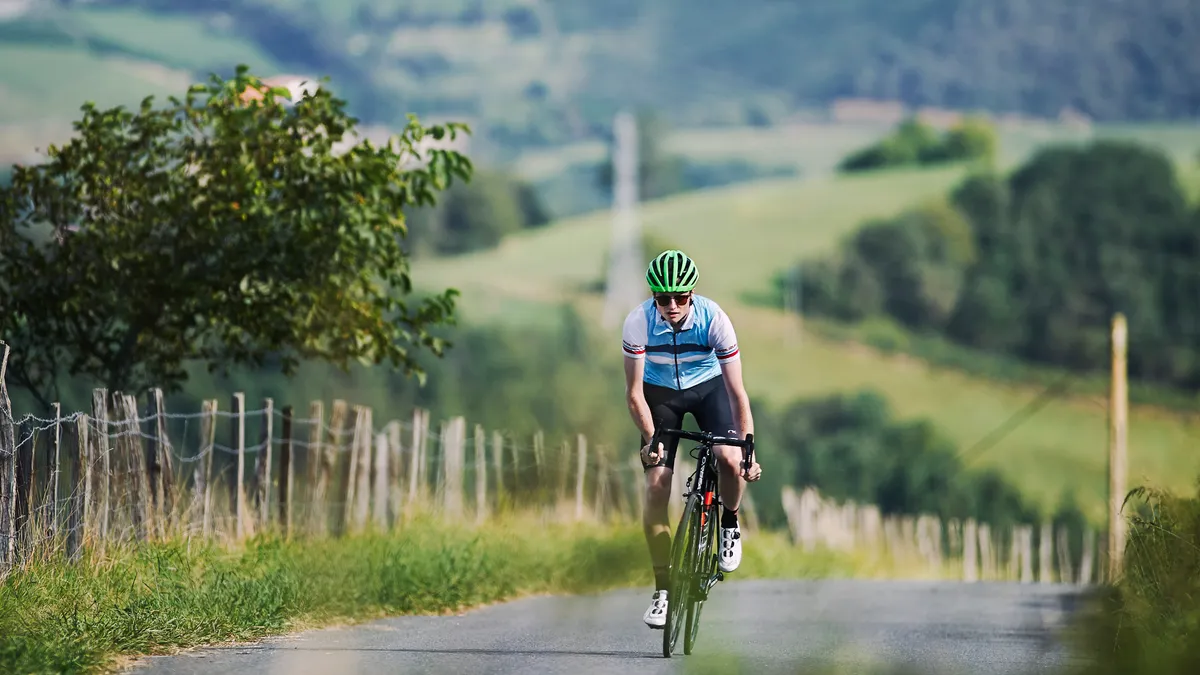Inhaling fewer emissions, better visibility, safety in the bunch, the daily commute, the motivation to stay with the peloton on the climbs — there are loads of good reasons why people choose to train when they do. Try using your body clock to maximise the benefit to your training and performance.
Although you might consider yourself a morning or afternoon person, daily fluctuations in bodily functions — known as circadian rhythms — are largely the same for everyone. So although daily peaks and troughs are useful to know for maximising training potential, the division between so-called morning and afternoon people is almost certainly a myth.
To prove the point, a team of researchers from Liverpool John Moores University took eight well-trained cyclists who all had a preference for training in the morning, and each performed an identical time-trial at 7.30am and 5.30pm (on different days, obviously!), with and without a warm-up.
Despite considering themselves morning people, all the riders performed significantly better in the afternoon, regardless of whether they’d done a warm-up. The reason had nothing to do with residual sleepiness or stiffness, or anything else you may be able to ‘train away’ with regular morning rides; no, the researchers believe the improved afternoon performance was down to the cyclists’ internal body temperature being consistently higher compared to the morning.
Circadian rhythms
This fluctuation in body temperature is just one of more than 100 different circadian rhythms operating inside of us. They are all controlled by the suprachiasmatic nucleus, a biological clock in a part of the brain called the hypothalamus. Although scientists have yet to pinpoint the exact mechanism it uses to pace your body, they know that daylight, social contact and mealtimes are all factors.
“Practically every bodily function shows daily rhythmicity,” said Dr Roberto Refinetti, chief editor of the Journal of Circadian Rhythms. “So that means, in theory at least, you can improve your ability to do something simply by selecting the right time of day to do it.”
When it comes to the physiological factors that affect exercise, the improvements can be significant and wide-ranging.
For example, a study by Dr Boris Medarov of the Long Island Jewish Medical Center in New York found that lung function was more than 6% better in the afternoon than at other times during the day, while Welsh scientists tested a group of 11 rowers and found they were able to work most intensely for a given build up of lactate at around 9pm in the evening, which coincided with their peak core temperature.
Cycling performance peaks
With cycling, the performance peak seems to be slightly earlier but just as significant. Researchers at the University of North Texas evaluated the effect of the time of day on a to-exhaustion cycling test. The 14 subjects managed to travel 9.6% further in the afternoon than the morning.

Another study from the University of Basse-Normandie found that cyclists peaked at 5.30pm in terms of maximum power production, and that at this time performance was 7.6% higher than the average for the rest of the day. Similarly, for average power output, 6pm was the optimum time, when it was a massive 11.3% higher than the daily average.
In each case the time of best performance mirrored very closely the daily peak of internal body temperature. The link has been most commonly ascribed to the fact that higher body temperatures result in less viscous blood flow, meaning muscles are more supple and consequently exercise feels easier because there is less energy loss from internal friction. But James Waterhouse, Professor of Biological Rhythms, and his team at LiverpoolJohnMooresUniversity uncovered another possible reason.
Why it’s important to keep your cool
In another study they looked at heart rate, core temperature and sternum skin temperature during exercise and recovery at 8am and 6pm. They found that increases in core and sternum temperatures during the afternoon exercise were significantly less than during the morning, even though the workloads were more or less the same. In addition, by measuring forearm skin blood flow — a measure of the ability of the body to lose excess heat — they were able to demonstrate that this ability is much higher in the afternoon.
This strongly reinforces the work done by a team from the University of Cape Town showing that performance in hotter conditions is reduced not because of dehydration but because of increased heat storage. So it may be that a higher initial body temperature is not in itself good for exercise, but paradoxically it results in better performance because the body is already in heat loss mode, as opposed to earlier in the day when it is actively trying to conserve heat because body temperatures are lower.
Your personal temperature gauge
Whatever the reason, body temperature seems to be the key factor in determining peak cycling performance, so it’s a good idea to try to work out exactly when your daily peak occurs. Fortunately this is very easy to do.
- Pick a day on which you’ve had good, normal sleep patterns for several days previously
- Then take your temperature every two hours
- Plot the results on a graph, connecting the points with a smooth line
- The resulting curve should give you a good idea of your daily temperature peak
That is likely to be the time when your cycling will be at its best, so try to plan time-trials or tough speedwork sessions accordingly.
